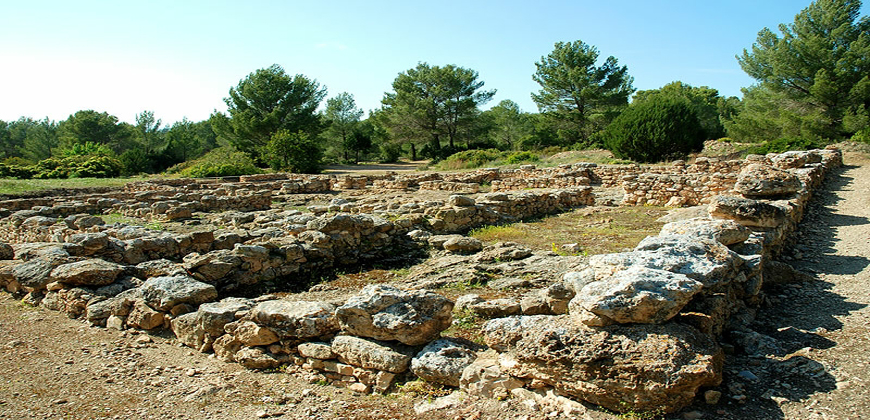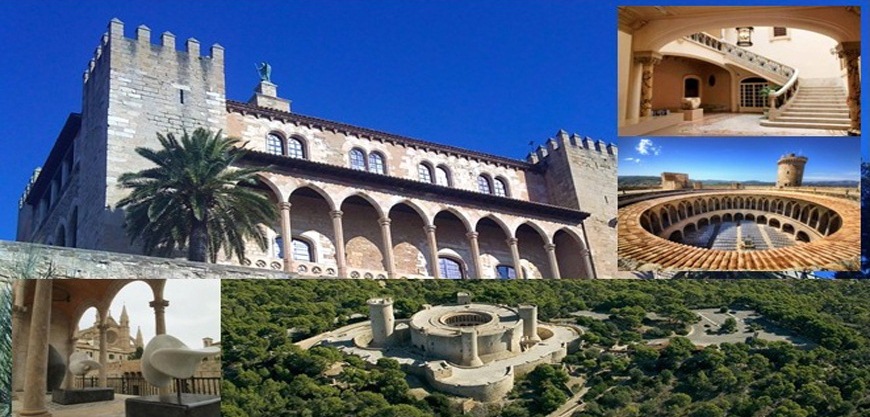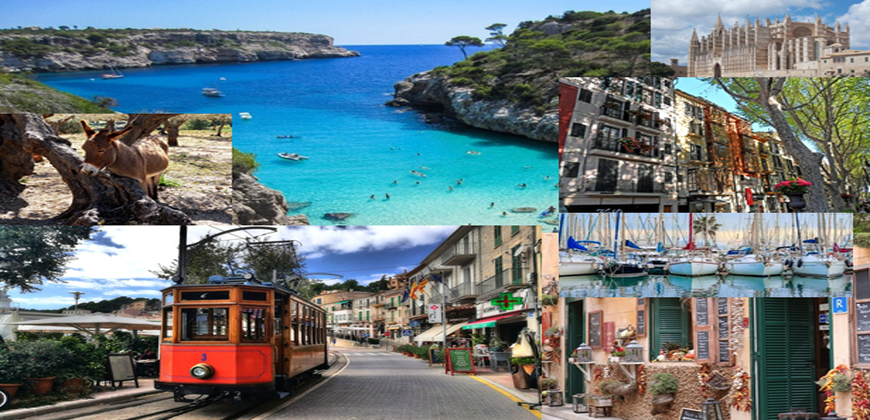“Ses Païsses” – the talayotic village
“Ses Païsses” is located at the exit of Artà to Capdepera, inside a holm oak forest above a small hill. The archaeological site, with an antiquity of more than 3.000 years, was declared in 1946 a Historical-Artistic Monument and between 1959 and 1963 the Italian professor Giovanne Lilliu made important discoveries about its constructions.
The Talayotic town of “Ses Païsses” was formed around a central talayot with a circular floor, a building that dominates the complex fulfilling its main mission of defense and surveillance and was developed with the construction of several rooms, a hypostyle hall and a defensive wall. According to Giovanne Lilliu, the site was used until the 2nd or 1st century BC, when its inhabitants, along with those of other towns in the area, settled at the foot of the hill of Sant Salvador, where today the town of Artà is located.
Without even having left the town, at a roundabout, we will find a sign to the right. Following less than one kilometer along this local road, we will arrive at the enclosure (camí de Sa Corballa s / n), which is open to the public:
- From November to March from 9 am to 1 pm and from 2 pm to 5 pm, Monday to Friday (Saturdays, Sundays and holidays, closed)
- From April to October from 10 am to 1 pm and from 2:30 pm to 6:30 pm, from Monday to Saturday (including holidays).
The price for “Ses Païsses” is € 2 per entrance to this famous archaeological site of “Ses Païsses” including a tourist guide to make the itinerary. In addition, by purchasing the “Artacard” you can visit other places of cultural interest for € 3.
In order to facilitate your tour of Ses Païsses you should know that it has a parking area and also a picnic space under the shade of the sturdy oaks.
As a curiosity, in front of the door of the main entrance of the enclosure is a monolith dedicated to Miquel Costa i Llobera, poet and priest born in Pollença in 1854.
The town of “Ses Païsses” is one of the largest in Mallorca, with more than one hectare and is one of the best preserved, since its definitive abandonment, in the middle of the first century AD. it was not reoccupied, except occasionally: next to the central door was located an Arab hut and some coal activity as a lime kiln. In reality the life of the town was cut abruptly with the Roman conquest in 123 BC, but a small nucleus survived until the Romans founded a new settlement in the current town of Artà, under the Sant Salvador hill where, by the way, you can also see a Talayotic wall used as the foundation of the medieval wall.
“Ses Païsses” fell finally into oblivion but nowadays it is one of the fundamental sites to understand the way of life of the Talayotic and Balearic.
In addition, we recommend to visit also the Roman city of Pollentia. It is the most important archaeological site on the island of Mallorca and is located near Alcúdia, although its name was inherited several centuries later by the town of Pollensa.




